Table of Contents
ToggleIntroduction
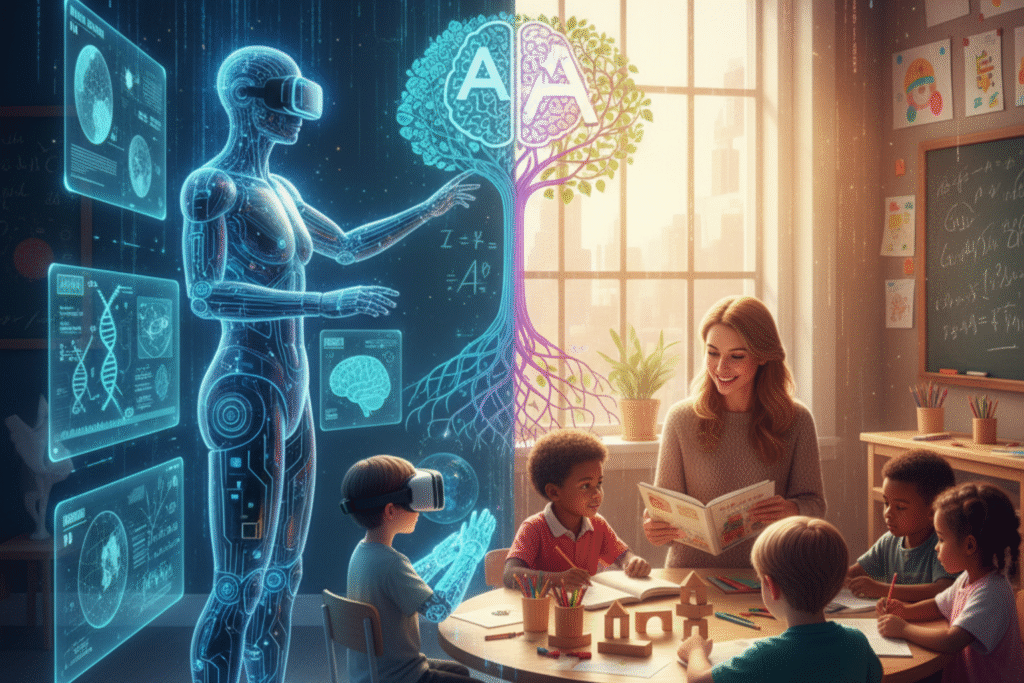
AI Tutors Versus Human Teachers Exploring the Emotional, Intelligent, and Powerful Future of Education[/caption]
Artificial Intelligence is rapidly transforming every corner of modern life, and education is one of its most profound frontiers. What was once limited to textbooks, classrooms, and human-led instruction has now expanded into a world of intelligent tutoring systems capable of personalizing learning for every student. This shift has sparked an important debate on AI Tutors Versus Human Teachers and who shapes the future of education better.
AI tutors offer intelligent, data-driven insights, adapting lessons to each learner’s pace, while human teachers provide emotional understanding, mentorship, and creativity that machines cannot yet replicate. The comparison between these two forces is not about replacement but collaboration, showing how technology and human intelligence can coexist to create a smarter, more compassionate education system.
As we explore AI Tutors Versus Human Teachers, this article will uncover how artificial intelligence is redefining the role of educators, improving learning outcomes, and shaping the emotional and intellectual growth of students across the world.
The Rise of AI Tutors Versus Human Teachers in Modern Education
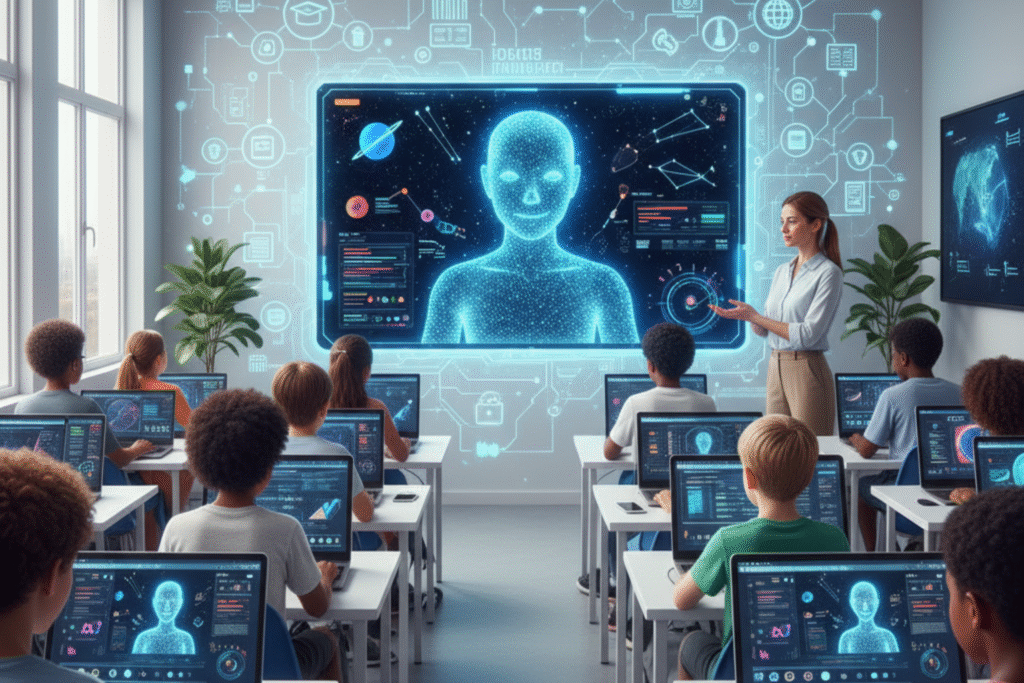
The global education system is undergoing a major transformation as Artificial Intelligence becomes a core part of teaching and learning. What was once a purely human-driven process is now enhanced by intelligent machines that analyze performance, personalize lessons, and adapt to each student’s unique needs. This progress has given rise to the ongoing discussion of AI Tutors Versus Human Teachers, a topic shaping the way students and educators approach learning in the twenty-first century.
AI-powered tutors have become increasingly common in both online and traditional classrooms. These systems can process large amounts of student data, identify weaknesses, and adjust lessons instantly, something human teachers may take longer to do. Platforms such as Khan Academy’s Khanmigo and Coursera have introduced AI-driven models that complement traditional teaching methods, improving accessibility and engagement.
However, while AI can handle the analytical and adaptive side of education, human teachers remain essential for emotional guidance, motivation, and personal connection. The balance between automation and empathy defines the ongoing evolution of AI Tutors Versus Human Teachers and highlights the need for collaboration rather than competition.
For a broader understanding of how Artificial Intelligence is transforming global learning systems, you can explore resources from UNESCO on AI in Education.
Understanding AI Tutors Versus Human Teachers in the Intelligent Learning Revolution.
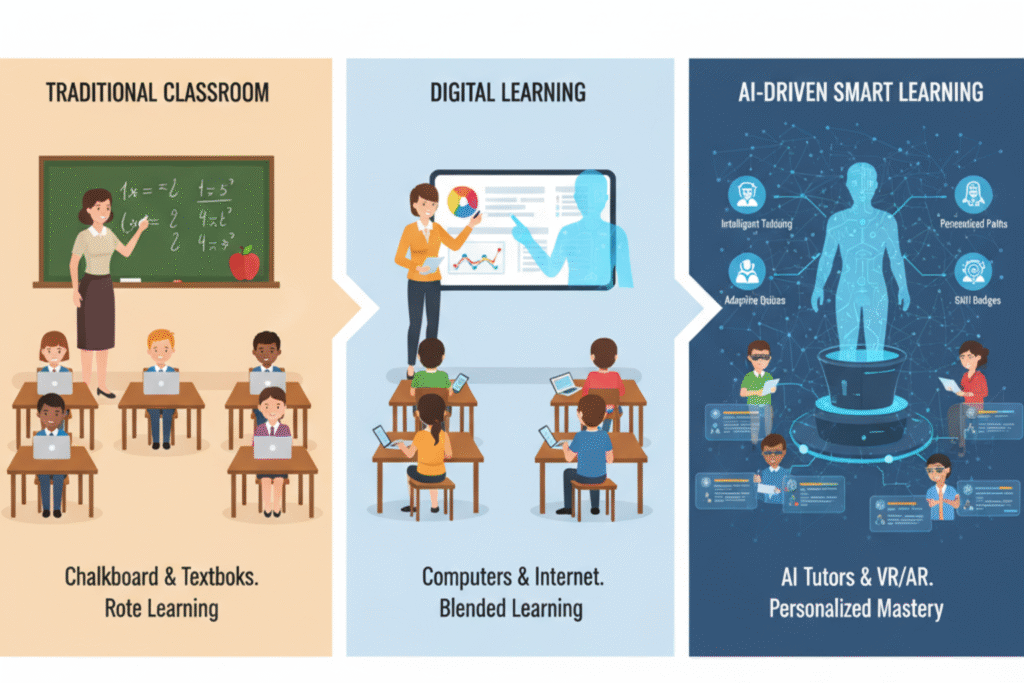
To understand the ongoing shift in modern education, it is essential to explore how AI Tutors Versus Human Teachers function within the intelligent learning revolution. Artificial Intelligence has introduced a new era of data-driven education, where algorithms analyze how each student learns, responds, and progresses. These AI tutors are capable of delivering customized lessons, offering instant feedback, and adapting teaching styles to match every learner’s individual needs.
Human teachers, on the other hand, bring a depth of emotional intelligence and social awareness that technology cannot replicate. They understand student behavior, provide encouragement, and build relationships that inspire confidence and motivation. This emotional connection remains one of the most valuable aspects of human-led education.
The key difference between AI Tutors Versus Human Teachers lies in their approach to understanding students. AI focuses on performance metrics and cognitive learning patterns, while teachers rely on empathy, intuition, and experience. Together, they form a powerful educational combination AI enhances the precision and efficiency of teaching, while humans preserve the heart and creativity of learning.
This intelligent learning revolution shows that education is no longer about choosing between AI Tutors Versus Human Teachers, but about merging technology and humanity to deliver a richer, more personalized learning experience for every student.
The Evolution of Technology Behind AI Tutors Versus Human Teachers.
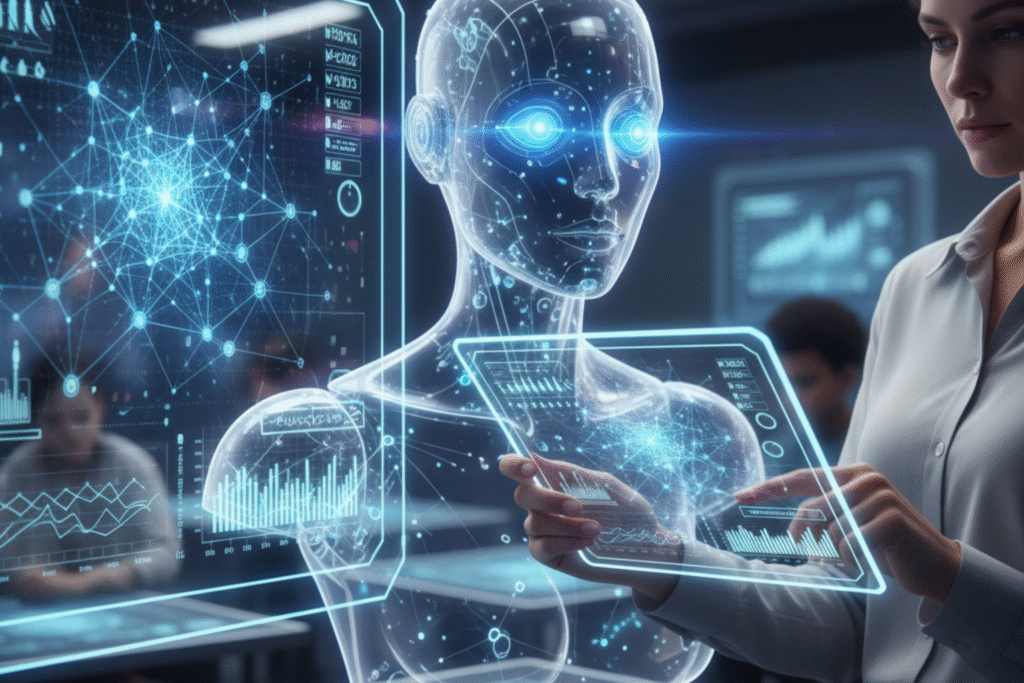
The rapid development of Artificial Intelligence has transformed the way we perceive teaching and learning, giving rise to the ongoing conversation about AI Tutors Versus Human Teachers. From early adaptive learning systems to advanced machine learning models, technology has evolved to create educational tools that can think, respond, and improve with every interaction.
AI tutors today use algorithms capable of analyzing millions of data points from student performance. These systems can adjust difficulty levels, suggest personalized exercises, and predict when a learner is likely to struggle. Such innovations were unimaginable only a decade ago, but breakthroughs in natural language processing and neural networks have made them possible.
Meanwhile, the role of human teachers has evolved alongside technology. Educators now use AI-driven analytics to identify student needs faster and design more effective teaching strategies. This collaboration between AI Tutors Versus Human Teachers represents a shift from competition to cooperation, where technology enhances rather than replaces the human touch.
For a deeper insight into how emerging technologies are reshaping classrooms, you can visit EdTech Magazine which explores innovations driving the future of intelligent learning systems.
Comparing the Strengths of AI Tutors Versus Human Teachers in Real Learning Environments.
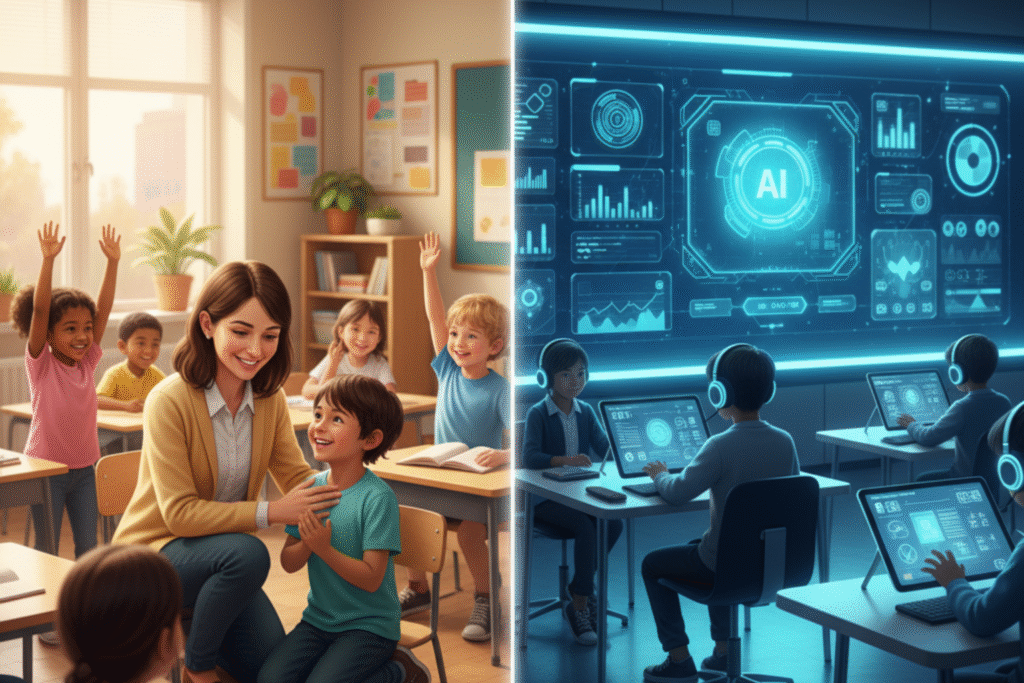
When examining AI Tutors Versus Human Teachers, it becomes clear that both bring unique strengths to modern education. Each contributes distinct advantages that, when combined, create a more balanced and effective learning experience for students across different age groups and disciplines.
AI tutors excel in personalization and efficiency. They can instantly analyze student performance, adapt lesson plans, and deliver content tailored to individual learning speeds. This makes them highly effective in large-scale online education platforms, where human teachers may struggle to offer one-on-one attention. AI tutors are also available 24/7, breaking down geographical and time barriers to make education more accessible.
Human teachers, however, provide emotional depth, motivation, and creativity that technology cannot duplicate. They can sense when a student feels discouraged, interpret unspoken cues, and adjust teaching styles based on personality and mood. This emotional understanding is the foundation of true mentorship and intellectual growth.
The most successful classrooms today often combine both approaches, using AI for precision and scalability, and teachers for empathy and inspiration. The comparison of AI Tutors Versus Human Teachers highlights not a rivalry but a partnership, where technology enhances human potential and teachers guide technology’s purpose.
For further reading on this collaborative model, explore educational insights from Edutopia, a resource dedicated to innovative teaching methods and learning technologies.
Personalization and Adaptability of AI Tutors Versus Human Teachers.
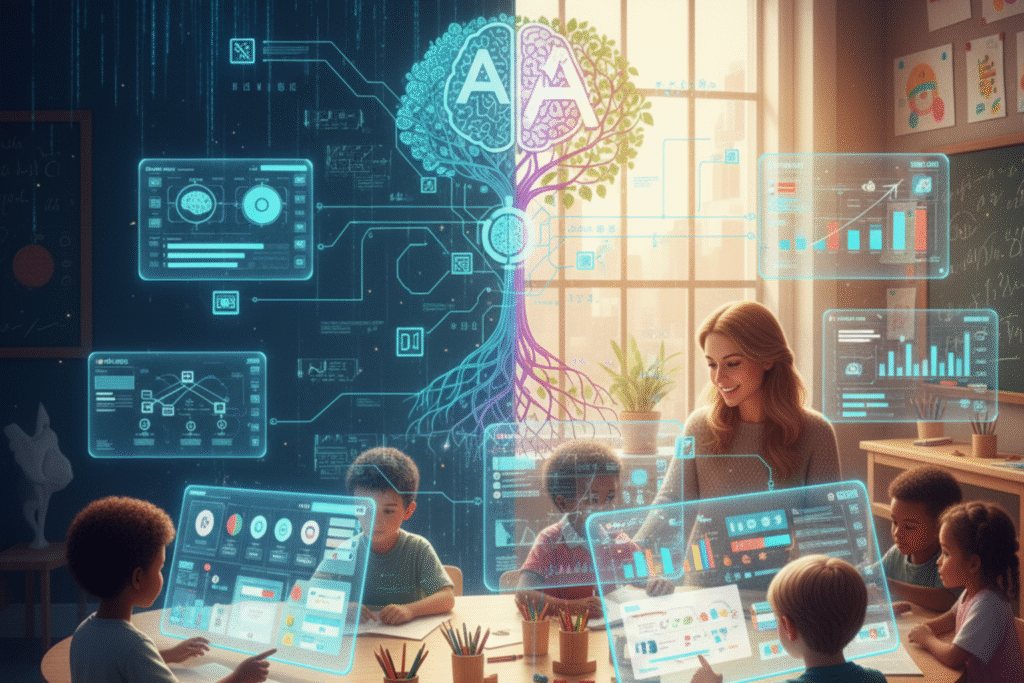
One of the most significant differences between AI Tutors Versus Human Teachers lies in their ability to personalize and adapt learning experiences. Artificial Intelligence has revolutionized the concept of individualized education by using data analytics to understand how each student learns, what challenges they face, and what pace suits them best.
AI tutors can track student behavior in real time, analyzing mistakes, response times, and learning patterns to tailor lessons instantly. These intelligent systems continuously learn and refine their methods, ensuring that no two students receive the same experience. This high level of adaptability allows AI tutors to address gaps in knowledge efficiently and deliver personalized feedback that keeps learners engaged.
Human teachers also excel in personalization, but in a deeply emotional and intuitive way. They can recognize a student’s frustration, celebrate their progress, and adjust their tone or approach to build confidence. While AI adapts based on data, teachers adapt based on empathy and experience, making both indispensable in achieving true personalization in education.
The growing collaboration between AI Tutors Versus Human Teachers demonstrates how technology and human understanding can work together to create balanced, student-centered learning environments. For insights on how AI-driven personalization is transforming global education, you can explore EdTechReview, a trusted source on educational innovation.
.
Emotional Intelligence and Creativity in AI Tutors Versus Human Teachers.
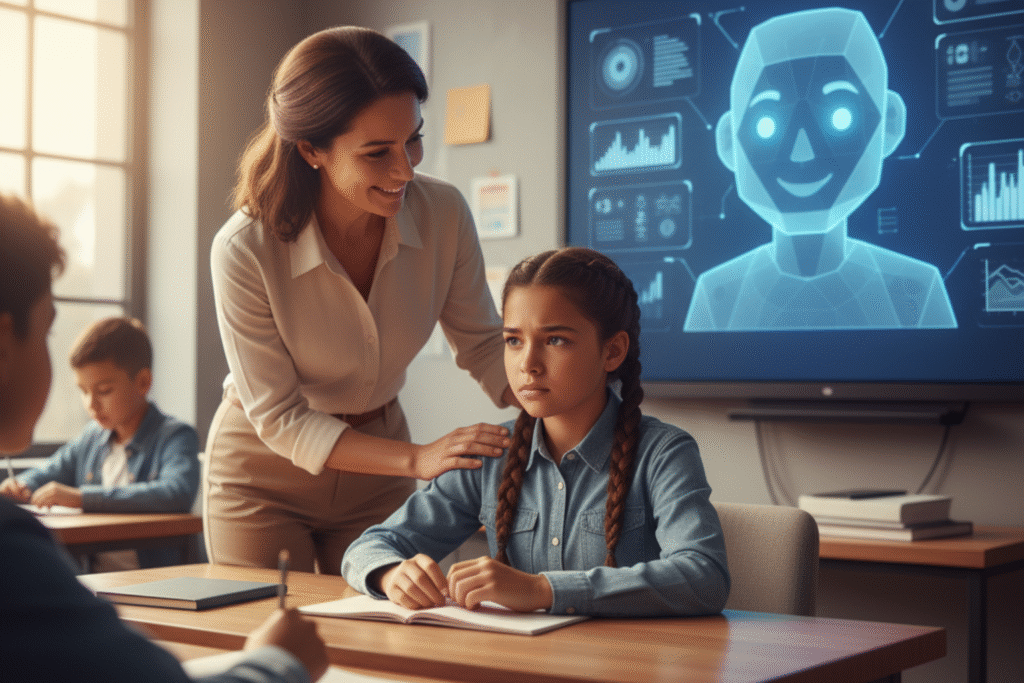
In the discussion of AI Tutors Versus Human Teachers, emotional intelligence and creativity remain the most defining human advantages in education. While AI tutors can analyze data, predict performance, and deliver lessons efficiently, they still lack the ability to connect emotionally with learners in a meaningful way. Human teachers, on the other hand, bring empathy, understanding, and encouragement that inspire students to learn beyond academic goals.
Emotional intelligence allows teachers to sense when a student feels anxious, unmotivated, or confused. This awareness helps them adapt their tone, offer reassurance, and create a supportive environment that builds confidence and curiosity. AI tutors, though highly advanced, operate on algorithms and cannot interpret emotional signals or offer comfort in the same way.
Creativity is another domain where human teachers excel. They can design engaging lessons, tell stories, and use real-world analogies to spark imagination—something AI systems are still learning to replicate. However, AI tools can assist teachers by suggesting creative resources, generating interactive content, or helping students visualize complex ideas.
The evolving balance of AI Tutors Versus Human Teachers shows that technology may enhance efficiency, but the emotional and creative impact of human educators remains irreplaceable. For more insights into how emotional learning shapes modern classrooms, visit Edutopia, a platform focused on innovation and emotional development in education.
Human Empathy and Mentorship in AI Tutors Versus Human Teachers.
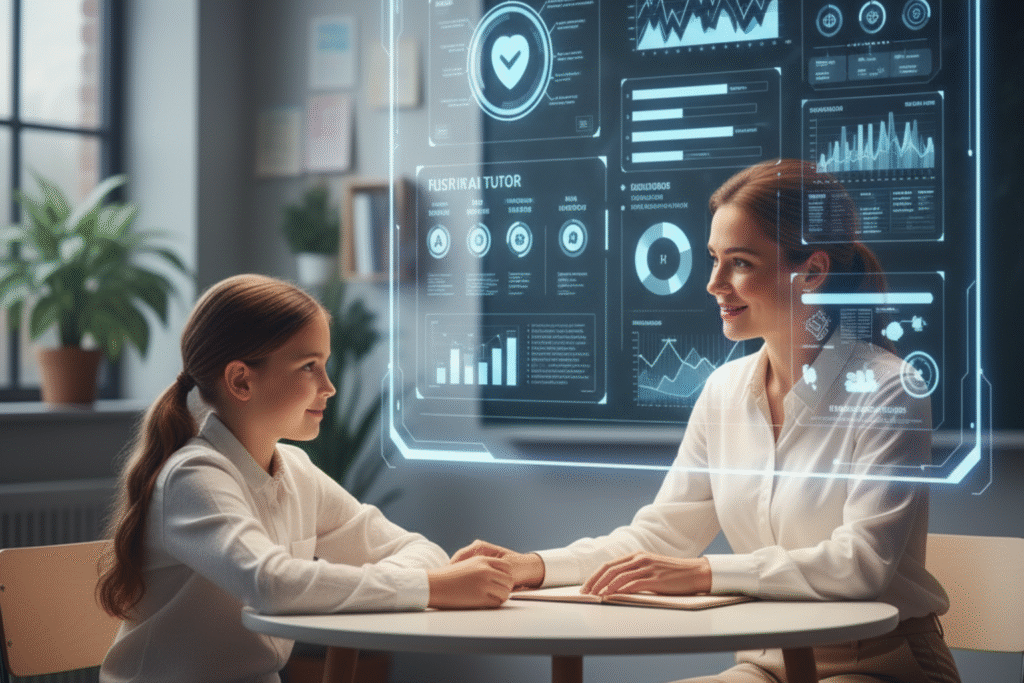
When comparing AI Tutors Versus Human Teachers, one of the most profound differences lies in empathy and mentorship. Human teachers have the unique ability to understand students on a personal level, recognizing their emotions, challenges, and motivations. This human connection builds trust, which is essential for effective learning.
Empathy allows teachers to respond not only to academic needs but also to emotional and social development. They notice when a student is struggling silently, provide reassurance, and motivate them to continue learning despite difficulties. This mentorship extends beyond the classroom, helping students develop confidence, resilience, and a lifelong love of learning.
AI tutors, while efficient and data-driven, lack the emotional depth to build such relationships. They can track performance but cannot sense the subtle cues that reveal how a student feels or why they may be disengaged. This limitation highlights the importance of combining AI efficiency with human empathy to achieve holistic education.
The evolving relationship between AI Tutors Versus Human Teachers reminds us that true mentorship is not just about transferring knowledge but nurturing potential. To explore how human empathy continues to shape modern education, you can visit EdTech Magazine, which covers stories about technology’s role in supporting educators and learners.
Real-Life Success Stories of AI Tutors Versus Human Teachers.
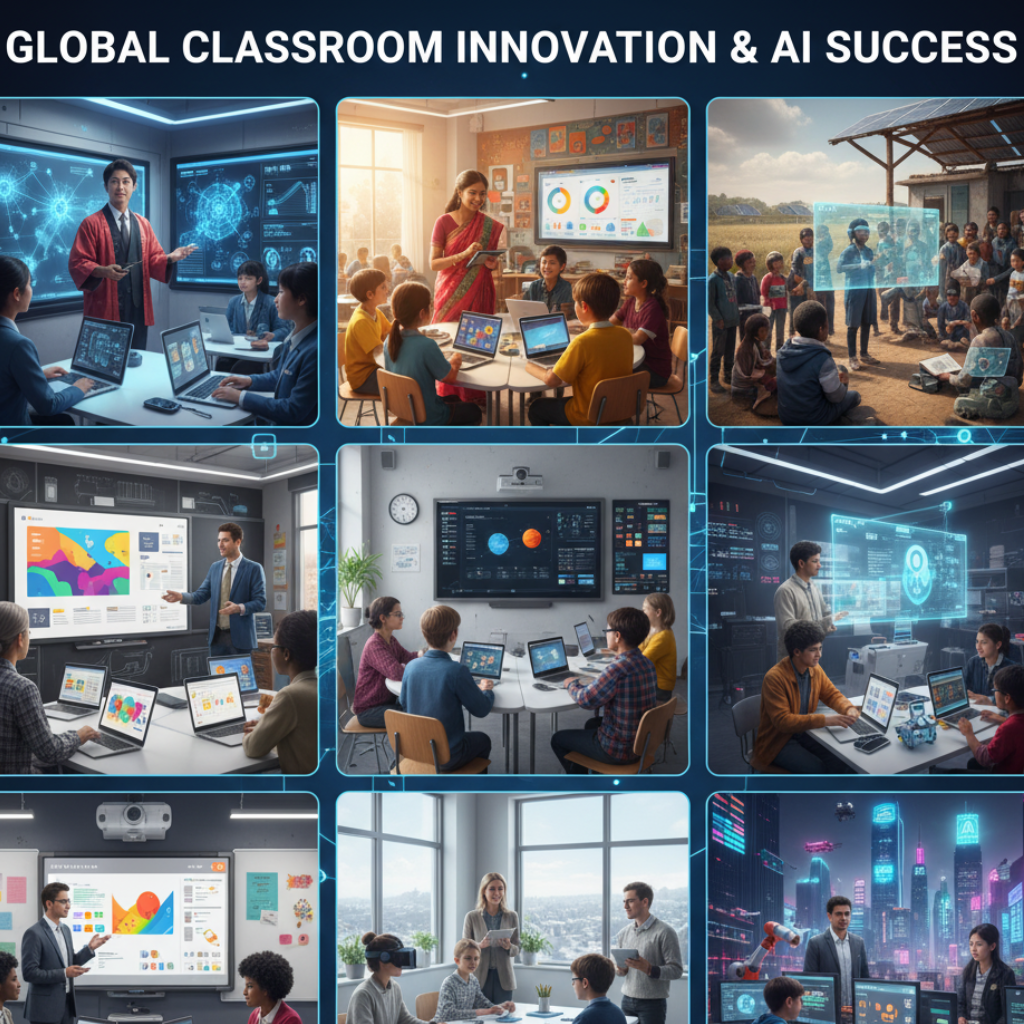
One of the most well-known examples is Squirrel AI Learning in China, which uses adaptive algorithms to analyze students’ performance and deliver customized lessons. Teachers then use this data to focus their attention where it matters most, blending AI accuracy with human understanding. This approach has helped millions of learners improve academic performance while keeping teachers central to the learning process.
In the United States, Carnegie Learning has implemented AI-driven platforms that assist teachers in identifying student weaknesses and providing targeted instruction. The integration of AI tools with human-led teaching has shown measurable gains in math comprehension and student engagement.
Another example comes from global e-learning platforms such as Coursera and Khan Academy, where AI systems recommend personalized courses while human instructors guide discussions, provide feedback, and offer mentorship.
These success stories highlight that the most powerful education models are not about choosing between AI Tutors Versus Human Teachers but about uniting them to create smarter, more adaptive, and emotionally responsive learning systems. For further exploration of real-world applications of AI in education, visit EdTechReview, which provides case studies and insights on educational innovation.
AI-Powered Platforms and Human Collaboration in AI Tutors Versus Human Teachers.

The success of modern education increasingly depends on how effectively technology and teachers work together. The collaboration between AI Tutors Versus Human Teachers has given rise to innovative learning environments where artificial intelligence enhances, rather than replaces, the role of educators.
AI-powered platforms such as Khan Academy’s Khanmigo, Coursera, and Duolingo Max are excellent examples of this partnership. These systems use AI algorithms to personalize lessons, track progress, and offer instant feedback, while teachers interpret data insights to guide student development more effectively. This balance allows educators to focus on creativity, mentorship, and emotional support, while AI handles repetitive and analytical tasks.
In classrooms around the world, teachers are using AI-based tools to predict learning gaps, recommend additional resources, and monitor student engagement in real time. This human-technology synergy ensures that students benefit from both worlds—data-driven precision and human empathy.
The growing collaboration between AI Tutors Versus Human Teachers represents the foundation of future education, where intelligent systems empower teachers to deliver more impactful and inclusive learning experiences. For more insights into this collaborative transformation, you can explore EdTech Magazine, which covers advancements in AI-supported education.
Case Studies and Global Examples of AI Tutors Versus Human Teachers.
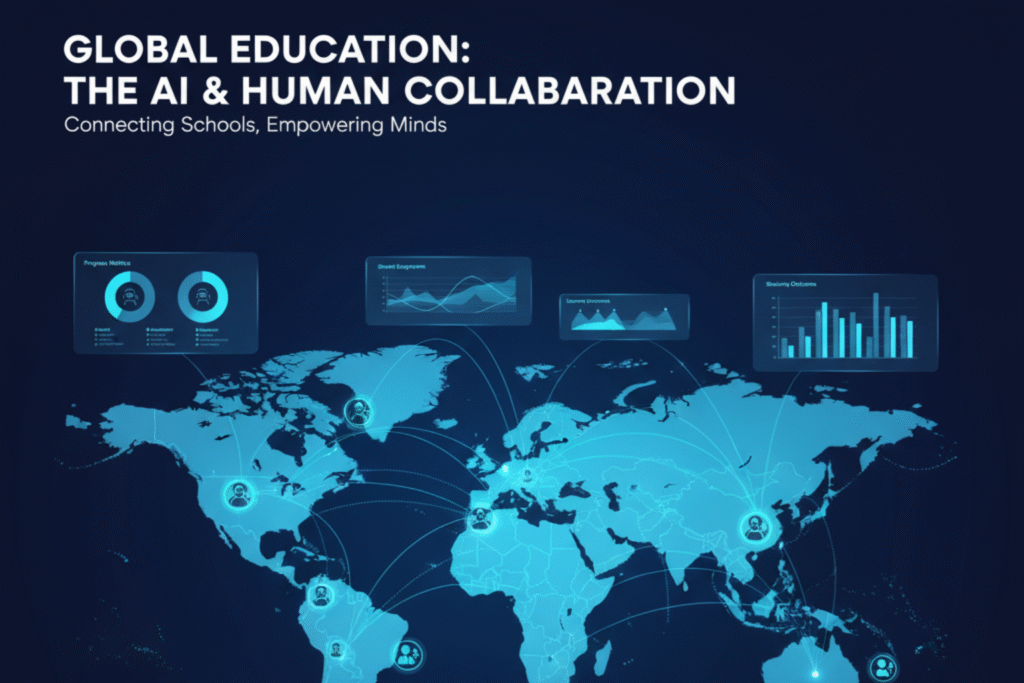
In China, Squirrel AI Learning has developed an adaptive learning system that uses Artificial Intelligence to assess student performance and provide personalized content. Teachers then interpret the AI-generated data to guide students with emotional support and critical thinking exercises. This partnership has significantly improved learning outcomes, particularly in subjects like mathematics and science.
In the United States, Carnegie Learning integrates AI-driven analytics into traditional classrooms. The platform helps teachers identify areas where students struggle and design individualized lesson plans. This system shows how AI Tutors Versus Human Teachers can work together to enhance comprehension and retention rates across diverse student groups.
Another global success can be seen in India, where platforms such as BYJU’S use AI-powered assessments alongside teacher-led classes. This combination has expanded access to quality education for millions of learners, especially in remote areas.
These case studies prove that the collaboration between AI Tutors Versus Human Teachers is not about replacement but reinforcement. By merging technological intelligence with human empathy, education systems can achieve the perfect balance between efficiency and emotional connection. For more global insights and education technology research, visit EdTechReview.
Ethical, Emotional, and Future Challenges of AI Tutors Versus Human Teachers.
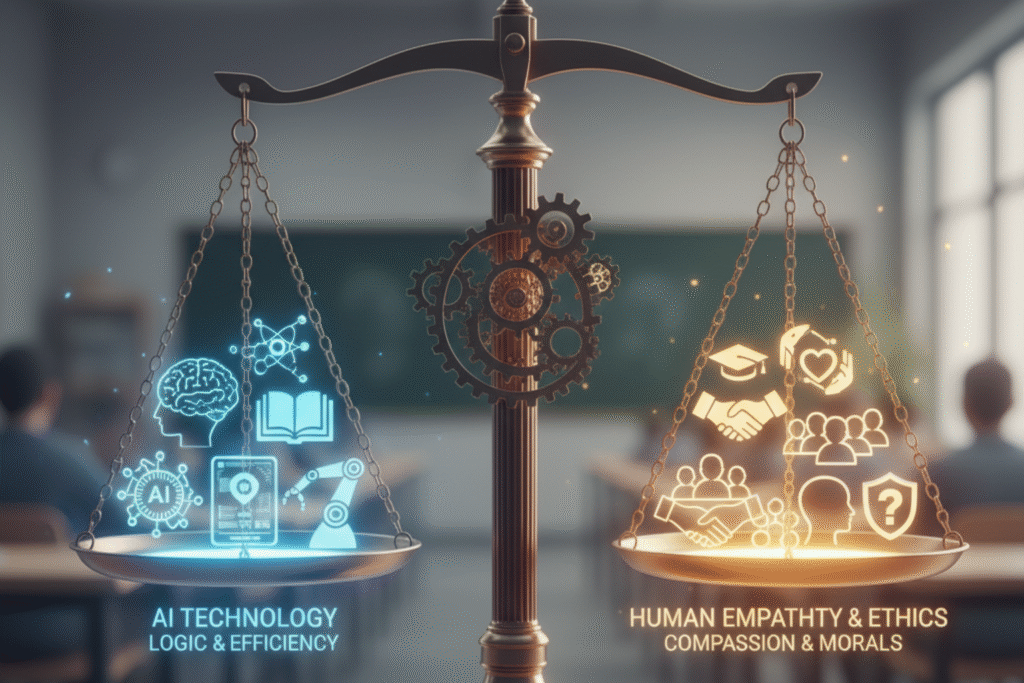
As artificial intelligence becomes more integrated into classrooms, new ethical and emotional challenges emerge. The ongoing discussion of AI Tutors Versus Human Teachers is no longer limited to efficiency or innovation but also concerns the moral and psychological impact of using AI in education.
One major ethical concern is data privacy. AI systems collect large amounts of student data, including performance metrics and behavioral patterns. Without proper regulation, this data can be misused or mishandled, raising questions about ownership and security. Additionally, algorithmic bias remains a risk, as AI tools may unintentionally favor certain groups of learners based on the data they are trained on.
Emotionally, the increasing dependence on AI tools may also reduce face-to-face interaction between students and teachers. The human connection that builds trust, motivation, and empathy could weaken if technology becomes the primary mode of communication. This emotional distance challenges the nurturing aspect of traditional education and highlights the irreplaceable value of human teachers.
Looking toward the future, the balance between AI Tutors Versus Human Teachers will depend on how educational systems implement policies and ethical standards. Responsible AI use requires transparency, inclusivity, and continuous teacher involvement to ensure that technology remains a supportive tool rather than a replacement.
For more perspectives on the ethical and policy implications of AI in education, visit the Brookings Institution, which provides in-depth research on technology’s role in shaping global learning systems.
Data Privacy and Ethical Dilemmas in AI Tutors Versus Human Teachers.
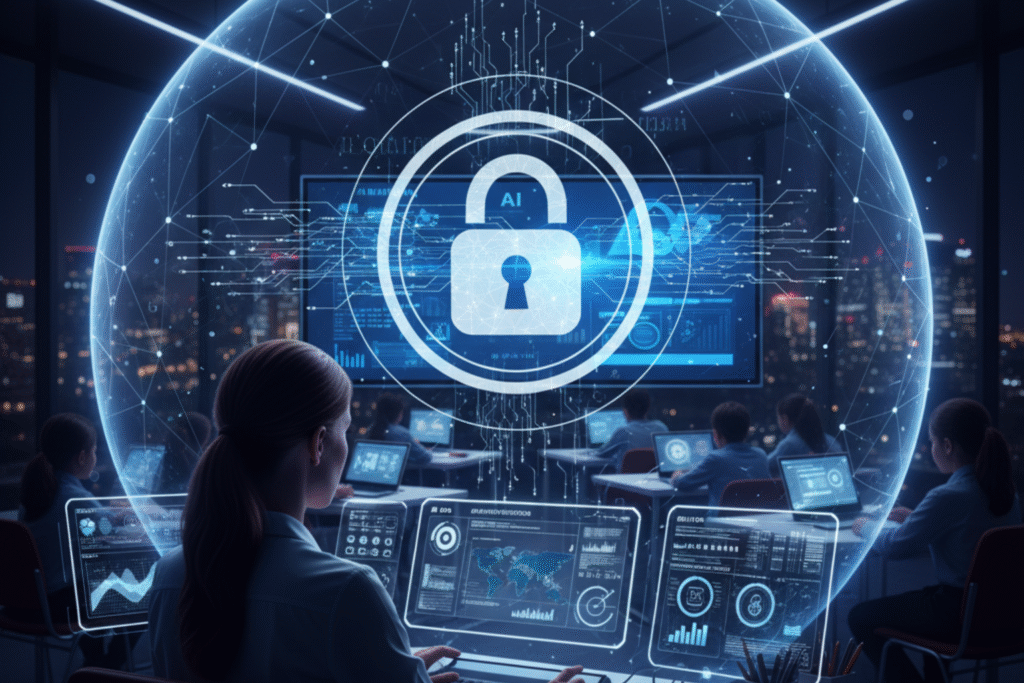
As AI systems become more deeply embedded in classrooms, the question of data privacy takes center stage in the debate over AI Tutors Versus Human Teachers. Intelligent tutoring systems analyze vast amounts of personal data, from academic performance and learning speed to behavioral patterns. While this data allows AI tutors to personalize learning experiences, it also introduces serious ethical challenges regarding how that information is collected, stored, and used.
A key dilemma arises when AI systems gather sensitive student data without full transparency or informed consent. Many platforms rely on cloud-based storage, which increases the risk of data breaches and unauthorized access. Teachers, parents, and policymakers must ensure that educational institutions maintain strict data protection standards and ethical guidelines before implementing AI tools in learning environments.
Another challenge lies in algorithmic bias. If AI systems are trained on unbalanced or incomplete datasets, they can reinforce existing inequalities by favoring certain demographics or learning styles. Unlike human teachers, who can adjust based on empathy and context, AI models rely solely on data-driven logic, making fairness and inclusivity harder to guarantee.
Balancing the benefits of data-driven personalization with ethical responsibility is critical. Educational leaders must design transparent frameworks where AI Tutors Versus Human Teachers work together to protect privacy, ensure equity, and maintain accountability in digital learning spaces.
To explore further research and insights on ethical AI in education, visit UNESCO’s Education and AI Initiative, which promotes responsible and human-centered AI development for global learning.
Emotional Balance and Trust Issues in AI Tutors Versus Human Teachers.
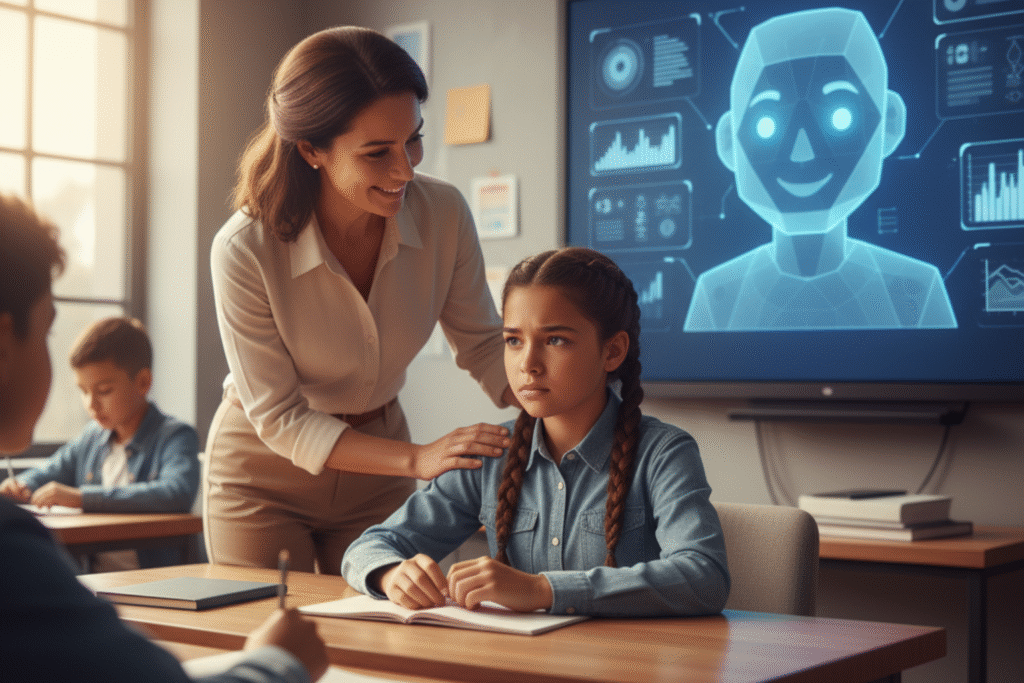
The emotional connection between teachers and students has always been the heart of effective learning. However, as artificial intelligence enters the classroom, a new challenge emerges — maintaining emotional balance and trust between AI Tutors Versus Human Teachers. While AI tutors can analyze data, track progress, and provide instant feedback, they cannot replicate the emotional understanding that human educators bring to the learning experience.
Human teachers build relationships through empathy, encouragement, and personal communication. They can sense when a student feels anxious, confused, or unmotivated — subtle emotional cues that no algorithm can fully capture. In contrast, students may find it difficult to trust or emotionally engage with AI tutors, viewing them as impersonal or mechanical, even if the system performs efficiently.
Trust issues also arise when AI systems make decisions that affect a student’s academic path. Without clear explanations for their recommendations or assessments, students and parents may question the fairness or accuracy of AI-driven feedback. This uncertainty can create emotional distance, undermining confidence in both the technology and the educational institution using it.
Balancing the emotional intelligence of teachers with the analytical precision of AI is key to fostering trust and stability in learning environments. The future of AI Tutors Versus Human Teachers depends on transparent communication, emotional awareness, and responsible AI design that respects the human side of education.
For additional insights into building emotional trust between humans and intelligent systems, explore Harvard Graduate School of Education’s Usable Knowledge, which discusses the psychology of learning and technology integration.
Policy and Future Guidelines for AI Tutors Versus Human Teachers.

As artificial intelligence continues to shape education, clear and forward-thinking policies are essential to guide the coexistence of AI Tutors Versus Human Teachers. Governments, educational institutions, and technology developers must work together to create ethical frameworks that ensure transparency, equity, and accountability in AI-powered learning environments.
A well-designed policy framework should address several key areas. First, data protection and privacy laws must safeguard student information from misuse or unauthorized access. Second, algorithmic transparency should be prioritized so educators and learners understand how AI systems make decisions and provide recommendations. Third, training programs for teachers should be developed to help them effectively integrate AI tools while maintaining emotional and pedagogical control in the classroom.
In addition, policymakers must consider accessibility and fairness. AI-driven education should not widen the gap between privileged and under-resourced schools. Regulations must promote inclusive technology that supports students from diverse cultural, linguistic, and economic backgrounds.
The future of AI Tutors Versus Human Teachers relies on collaboration between technology innovators and educators, guided by ethical and educational principles. By implementing responsible policies today, societies can ensure that AI strengthens—not replaces—the human connection that defines true learning.
For more in-depth discussions on global education policies and AI ethics, visit OECD’s AI and Education Initiative, which explores international efforts to create balanced and ethical frameworks for artificial intelligence in schools.
Conclusion: The Balanced Future of AI Tutors Versus Human Teachers
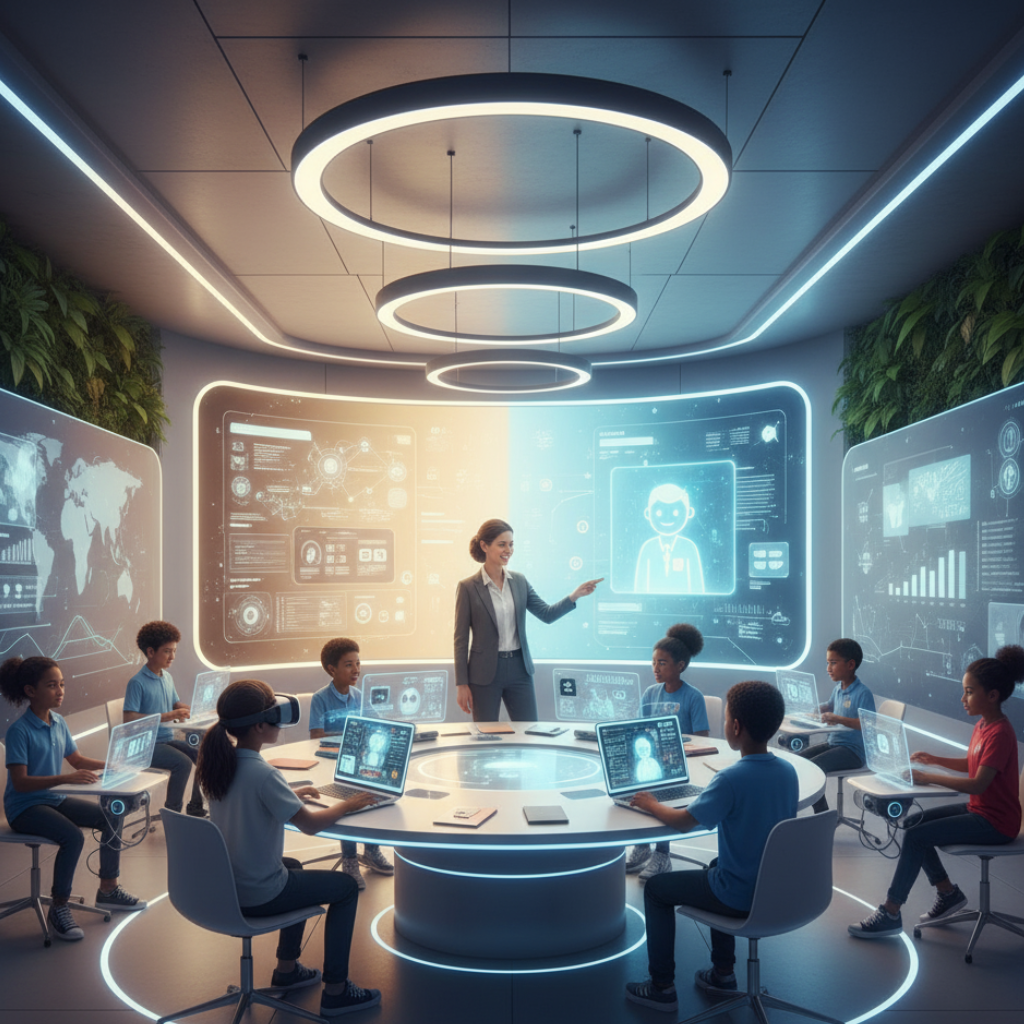
The debate over AI Tutors Versus Human Teachers is not about competition but collaboration. As the education landscape evolves, the most successful systems will be those that harness the strengths of both — the analytical precision of AI and the emotional intelligence of human educators. Together, they can create a more personalized, inclusive, and engaging learning experience for students of all backgrounds.
Artificial Intelligence offers unmatched adaptability, enabling educators to track progress, predict challenges, and deliver customized instruction. Yet, it is the human teacher who provides mentorship, empathy, and inspiration — elements that no machine can replicate. The true future of education lies in balance: where technology empowers teachers and teachers give technology purpose. By embracing innovation responsibly, schools and institutions can ensure that the rise of AI Tutors Versus Human Teachers leads to progress rather than replacement. Education’s future will depend on a shared vision — one where artificial intelligence amplifies human potential and where both tutor and teacher work hand in hand to build smarter, more compassionate learners.
